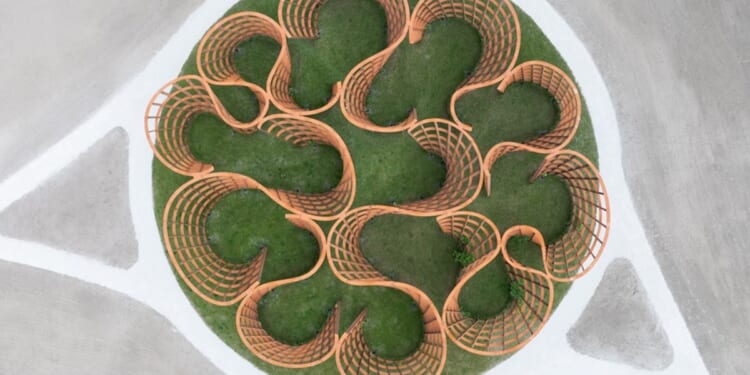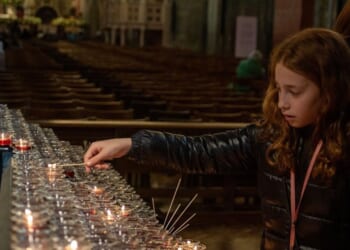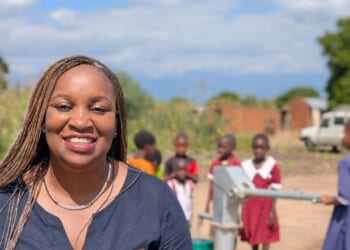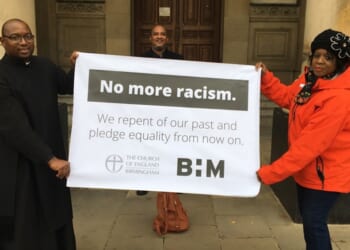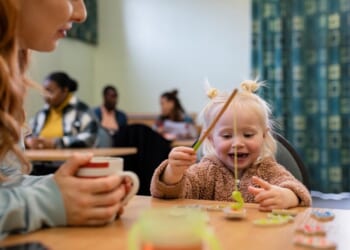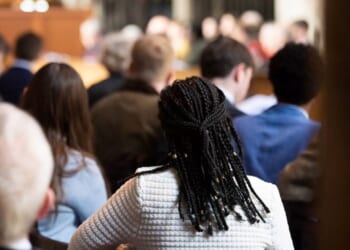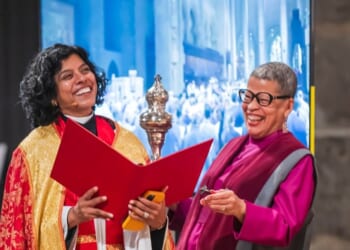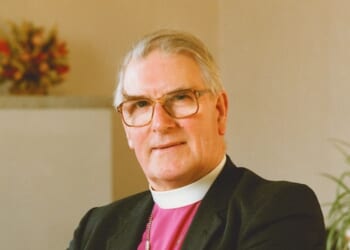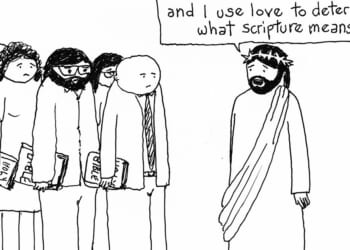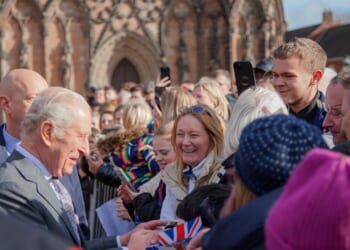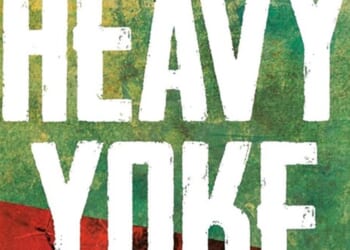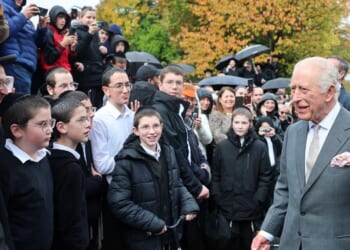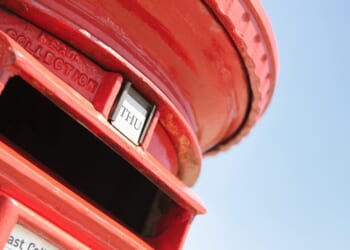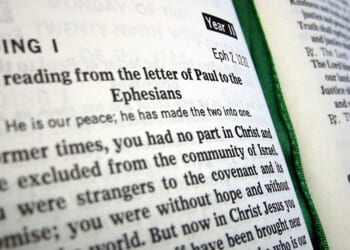THE Belgian city of Leuven is enjoying a long moment in the sun. A finalist for European City of Culture 2030, the city’s Catholic University, KU Leuven, is also celebrating the 600th anniversary of its foundation.
To mark the milestone, KU Leuven has commissioned eight works of art and eight poems positioned throughout the campus, to illustrate the anniversary theme: “And So, Change Comes in Waves”.
In Arenberg Park, the artistic duo Gijs Van Vaerenbergh have created Wandering Garden, a series of five-metre-high, serpentine steel shapes, supporting fast-growing climbers, including clematis and wisteria. Echoing hedge mazes and formal gardens at at Versailles, Wandering Garden will change appearance through the seasons. Its series of almost connecting sinuous frames, resembling halved gasometers, is a metaphor for scientific research. In the shadow of Arenberg Castle, the structure is on the site of a former car park that once was forest.
KU Leuven is permeated with historically layered sites. Sixteenth-century Arenberg Castle was donated to the university in 1916, as the Duke of Arenberg wanted to make amends for his German-sounding family name, in the midst of the First World War. And statues of the Madonna and the apostles decorate the university’s faculty and administration buildings, revealing the institution’s Catholic foundation.
A winding path from the castle leads to Sint-Lambertuskapel, a church founded in 781 and rebuilt in the 12th-century Romanesque style. Set in a glade of green leaves, the present church is glazed on both sides, presenting a substantial, see-through box, attached to a tower. Darker stones from the Romanesque church form the base of the tower, with lighter stones, from later periods, taking the square set tower soaring above the roofline. Along the top of the glass structure, handmade gold letters against a gleaming black background present the neuroscientist and poet Jan Lauwereyn’s “Vision of Here and Now”. The poem is inspired by the writings of 13th-century mystic Hadewijch, the first writer to use the vernacular for recording mystical Christian visions.
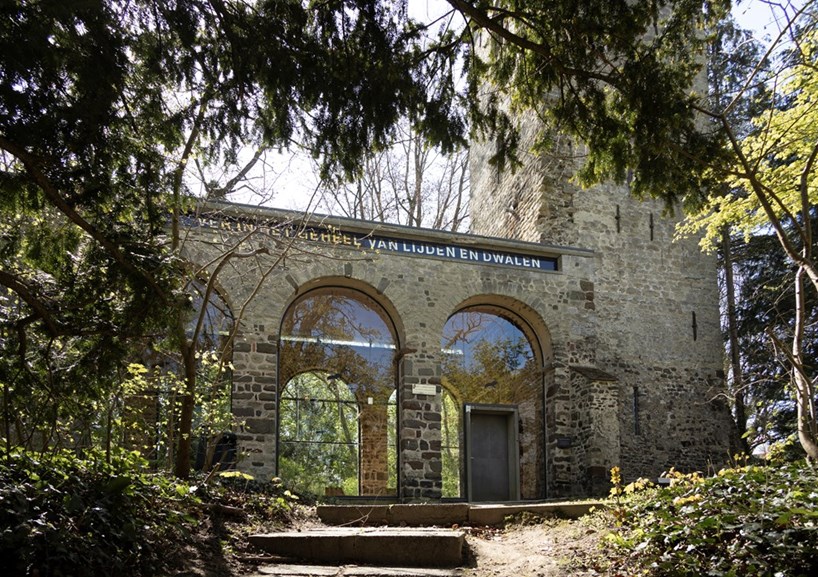 Photo Marijke ‘T KindtJan Lauwereyns, Visioen Van Hier En Nu (Vision of Here and Now), 2025
Photo Marijke ‘T KindtJan Lauwereyns, Visioen Van Hier En Nu (Vision of Here and Now), 2025
Near by, Belgium’s colonial past is examined by the Congolese artist Sammy Baloji’s sculpture Kibawa’s Little Boy. Two black lozenge shapes recreate a fractured uranium crystal, referring to the uranium extracted in the Katanga region of the Congo, with the Belgian authorities’ support, for the first atomic bomb dropped on Hiroshima, known as Little Boy.
Inside the sculpture, carved into its smooth facing planes, a tiny golden figure alludes to traditional Mayombe statues. The statues were often taken by Belgian missionaries as mementoes of their time in the Congolese mission field. Kibawa’s Little Boy is a comment on colonial extraction of resources and culture. Kibawa, in the piece’s title, refers to an earth spirit who may seek revenge for the despoilation of the planet. Baloji says: “I’m not interested in colonialism as nostalgia or something from the past, but in the perpetuation of the colonial system.”
Van Dale College was founded in 1569 by Pieter van Dale, canon at the Cathedral of Our Lady, Antwerp, for scholarship students. For the next year, the college’s redbrick and leaded window courtyard will be the site for Berlinde De Bruyckere’s Arcangelo IV, 2024-2025 (2025). Draped in the cast of a cowhide, this monumental angel has no halo, and only a hump between its shoulders hinting at wings.
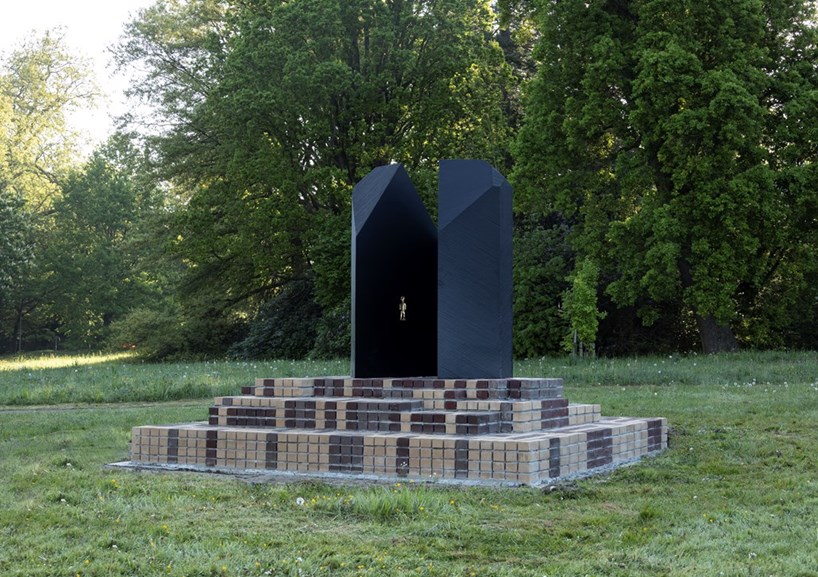 photo Marijke ‘T KindtSammy Baloji, Kibawa’s Little Boy (2025)
photo Marijke ‘T KindtSammy Baloji, Kibawa’s Little Boy (2025)
During Covid, the artist was inspired by an early-16th-century painting, The Dead Christ Supported by an Angel, previously attributed to Giorgione. De Bruyckere saw parallels between the part played by the angel in the Renaissance work, bearing the weight of Christ’s body in its notably slender hands, and the vocation of nurses in the pandemic caring for the sick and dying. The motion in Arcangelo IV’s feet, the sculpture’s flexed toes barely in contact with the plinth’s surface, brings to mind Elisabeth Frink’s Walking Madonna outside Salisbury Cathedral. Both figures visibly bear great emotional burdens and yet find a way to keep going.
The Ivy League-style campus of KU Leuven, home to the Anjou Bible (1340), which has illustrations of Robert I of Anjou embedded in biblical stories, and to a theological college founded by Pope Adrian VI, the only pope to come from the Low Countries, is a model of accessibility. Visitors follow the Art and Science Route freely around the campus grounds, encouraged to experience it as they wish: “Touch it, it’s public art!” the curator, Heidi Ballet, urges them.
More information about “And So, Change Comes in Waves” is at: www.kuleuven.be

